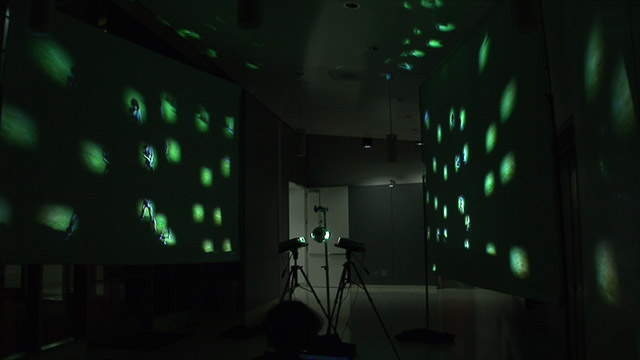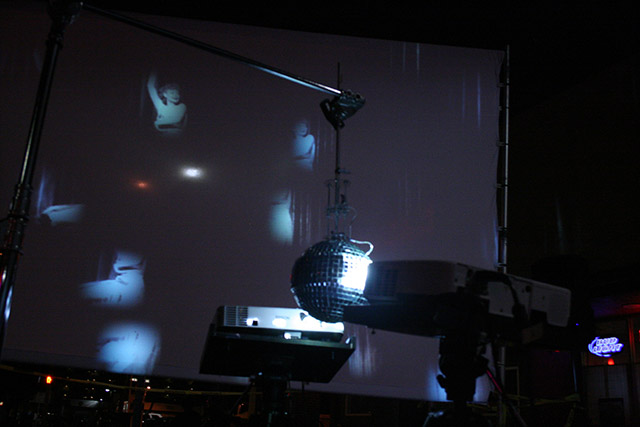


At the heart of Discotrope is an unconventional projection system: a disco ball that has been modified to use solar cells as mirrors. The ball rotates slower or faster according to how much light reaches the solar cells on the ball and creates fragmented projections on surrounding walls, floors, surfaces and people. We've written custom software to project videos onto the ball and have developed a live audiovisual performance around the system.

The concept springs from the genre of YouTube clips of people dancing at (directly in front of) a camera. With the advent of social media, this type of video has become a phenomenon, with countless people recording themselves dancing and sharing the results through social media platforms. In our performance, we trace this type of dance video back throughout film history.
A selection of Discotrope performances may be found at http://discotrope.org/?page_id=47.
Amy Alexander is a software and audiovisual performance artist who has worked in film, video, music performance and stand-up comedy, as well as in digital media art. Her work combines her backgrounds in performance and visual rhythms with new media. She is an Associate Professor of Visual Arts: Computing at the University of California, San Diego. Amy's work has been presented on the Internet, in clubs and on the street as well as in festivals and museums. She is a founder of the Runme.org software art repository, and she has published texts about both software in popular culture and audiovisual performance history. Her work has been performed and exhibited at venues including ISEA, Ars Electronica, Transmediale, Read Me, SIGGRAPH, and the Whitney Museum. Amy holds an MFA in Film/Video from California Institute of the Arts and a BA from Rowan University. In summer/fall 2012, Amy was Artist-in-Residence at iotaCenter in Los Angeles. Check out Amy-Alexander.com.
Annina Rüst produces electronic objects and software art. Her projects explore the intersection of politics, activism, technology, humor, and pop culture. Her work has been shown in different public contexts including Ars Electronica, Transmediale, Read Me, the New Museum, and Edith Russ Haus. Annina holds a Diploma in New Media from the Zürich University of the Arts, an MFA in Visual Art from UC San Diego as well as an MS in Media Arts and Sciences from the MIT Media Lab. She is an Assistant Professor in the Department of Transmedia at Syracuse University. AnninaRuest.com.
Cristyn Magnus received her PhD in Music from University of California, San Diego in 2010, where she studied music technology with Miller Puckette and composition with Philippe Manoury and Rand Steiger. She has a Bachelors in Cognitive Science and her musical interests lie at the intersection of the two fields. She likes playing with algorithms and interactivity. Her work explores the way groups of performers, audience members, and computational agents interact to make music. She's written pieces for performers whose interactions are defined by rules with no computational mediation, pieces where sounds map onto video game controls so that the act of playing games will produce musical output, pieces for recorded sounds that exist as artificial life forms interacting in artificial worlds, and so on. See www.CMagnus.com.



 del.icio.us
del.icio.us


